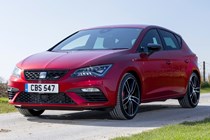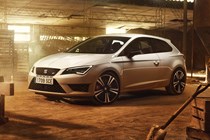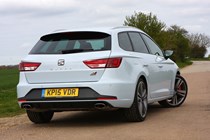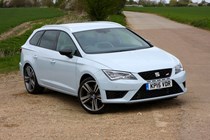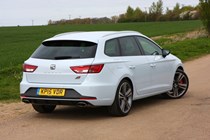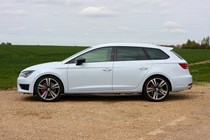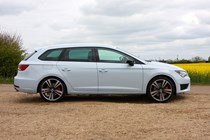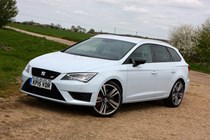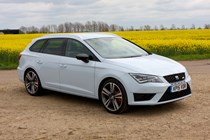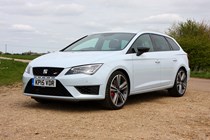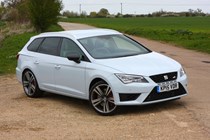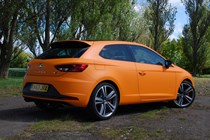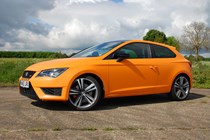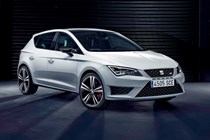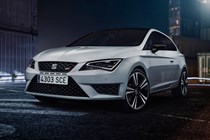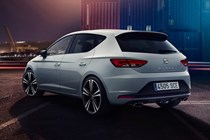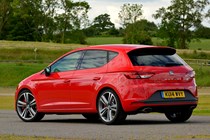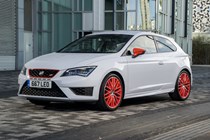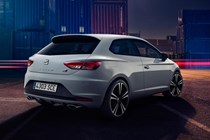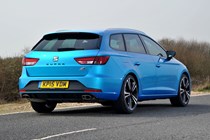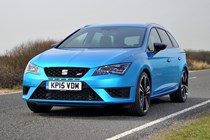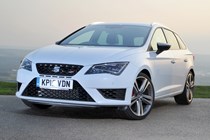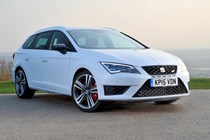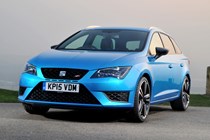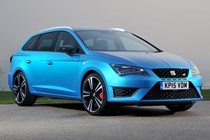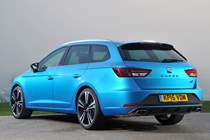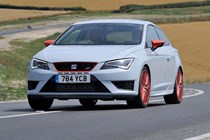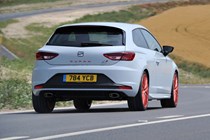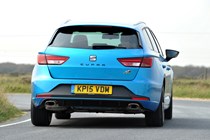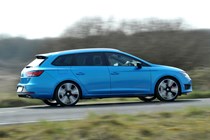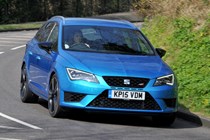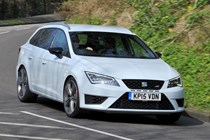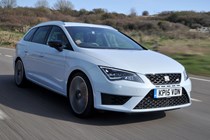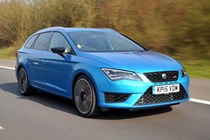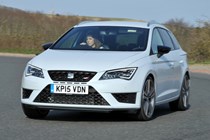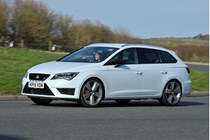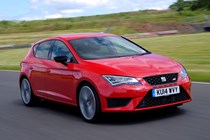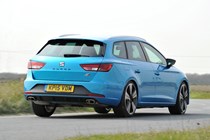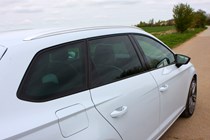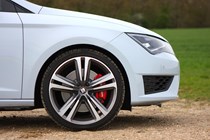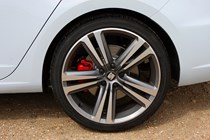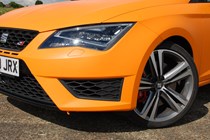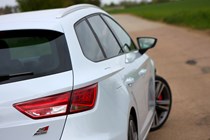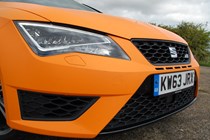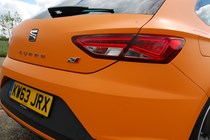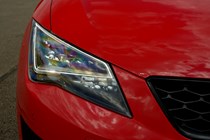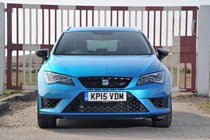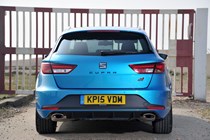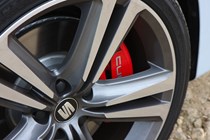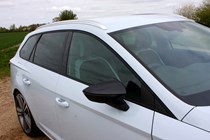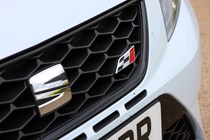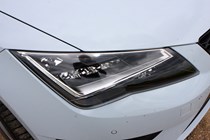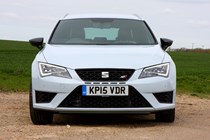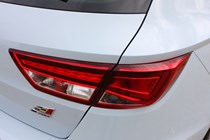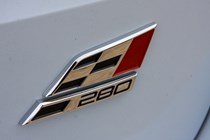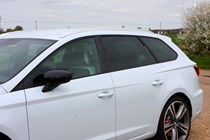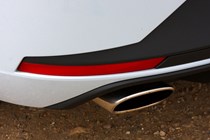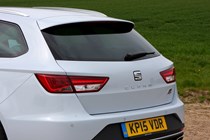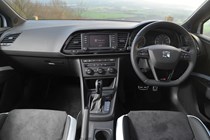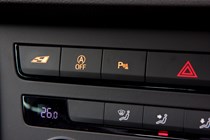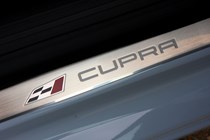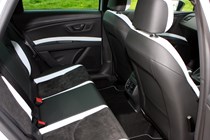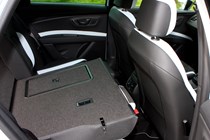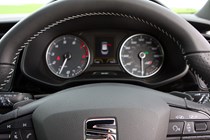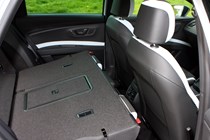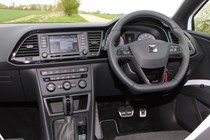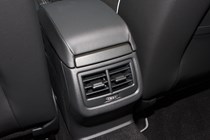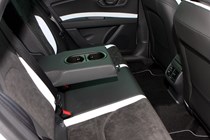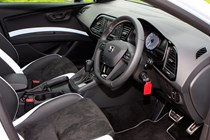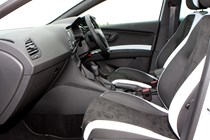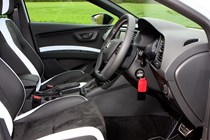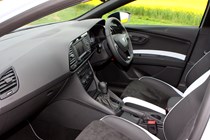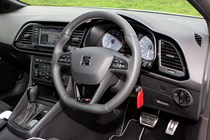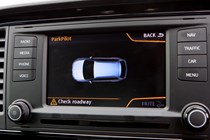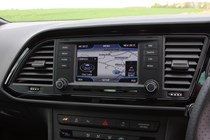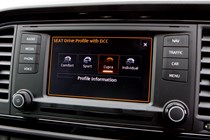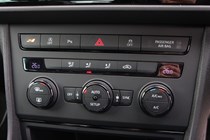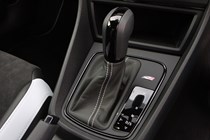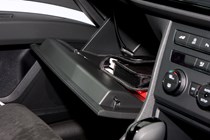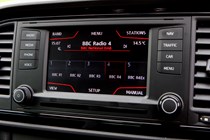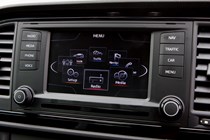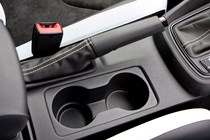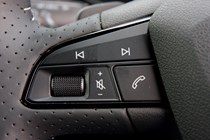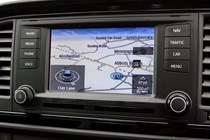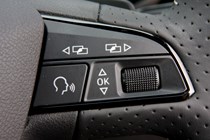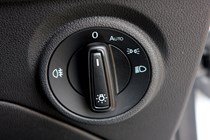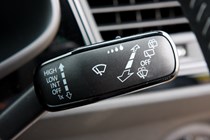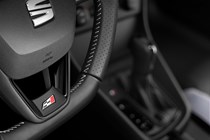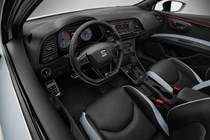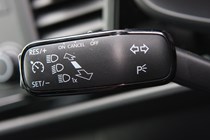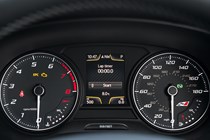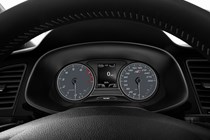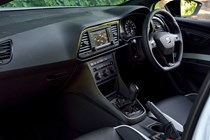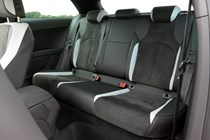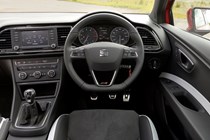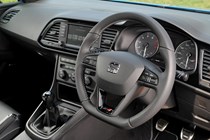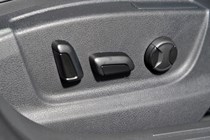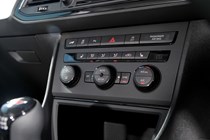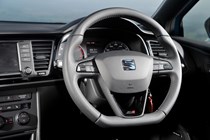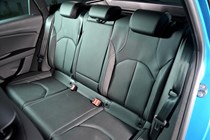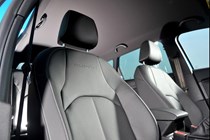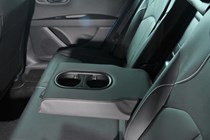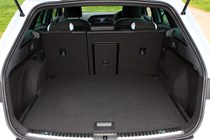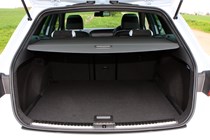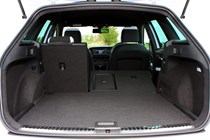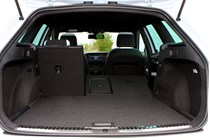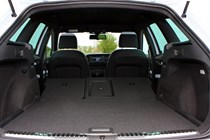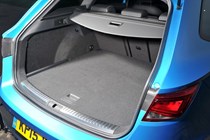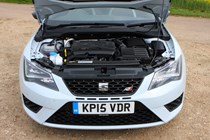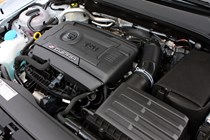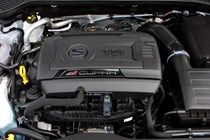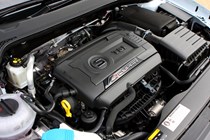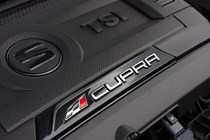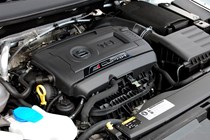
SEAT Leon Cupra (2014-2016) engines, drive and performance
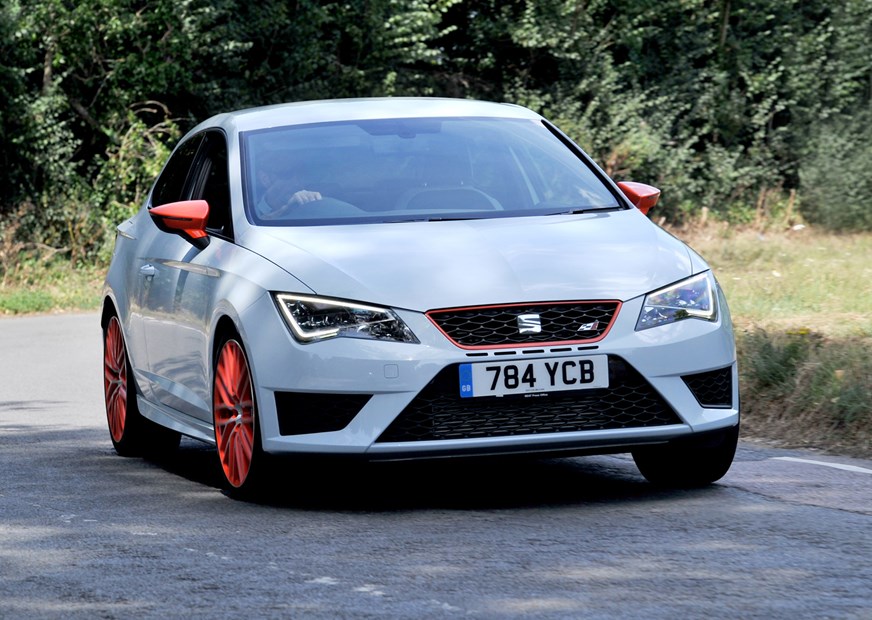
There’s no diesel engine to choose here and both petrol models produce within 20bhp of each other so SEAT Leon Cupra performance is much the same regardless which model you opt for. No matter, whichever you choose you’ll happily class them as properly quick.
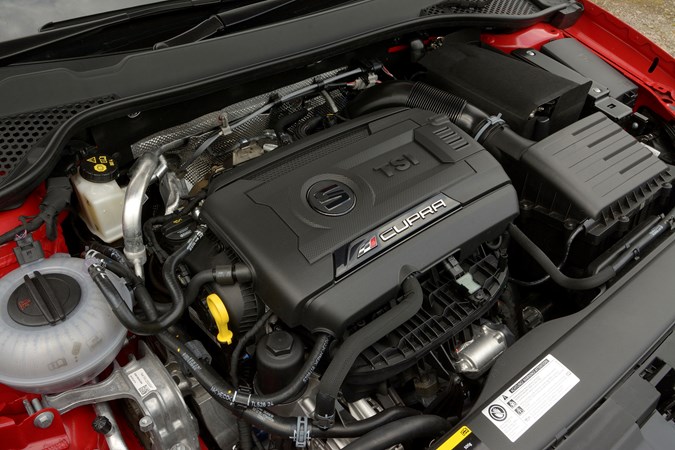
Leon Cupra
Supposedly 15bhp down on its bigger brother, but thanks to a matched peak torque of 350Nm all the way from 1,750 to 5,300rpm you’ll never notice on the road. In fact even driving them back to back you’d struggle to tell a debadged pair apart – but then the 265 doesn’t sound so cool for pub bragging.
Still, that wall of torque means power is available from the off, and no matter what gear you have selected forward motion is properly in your face – in fact few hot hatches feel quicker than either of these pair
The 265 is only available with the manual gearbox, and only in three-door SC form too; if you want five doors, an estate body or a gearbox that changes ratios itself then the more powerful 280 is your only option. We suspect that while the 265 is just as good, the extra equipment and power (and bragging rights) of the latter will ensure it proves the most popular in the UK.
That six-speed manual gearbox is easy enough to use but strangely short-geared in sixth; 70mph is only just under 3,000rpm while the 180bhp FR models sit at a far more palatable (and efficient) 2,450rpm at the same speed.
Leon Cupra 280
Essentially the same engine as in the regular Cupra but with the volume knob turned up past 11, the 280 signifies this model deploys an extra 15bhp over its brother. For those looking to hold their own down the pub this is an important detail, but in the real world it matters not.
On paper the 280 will sprint from 0-62mph one tenth of a second quicker (two tenths if it has DSG fitted) then the 265 manual car; ST estates are three-tenths of a second slower than the five-door hatch counterparts.
The DSG box is well-suited to the car, though it only has six speeds and suffers from the same problem in this respect as the six-speed manual – a seventh gear or longer final drive would improve matters for cruising. Still its shifts smoothly and quickly, and only the disappointing plastic paddles behind the steering wheel let the experience down.
It’s uncanny just how much grip the SEAT Leon Cupra has; you’d be forgiven for wondering whether there was some drive being sent across the rear axle such is the level of composure and balance. It’s wholly front-wheel drive though, and if 276bhp sounds a lot to be pushed through the front wheels you’d be right – but with the mechanical differential fitted as standard there’s little tell-tale scrabbling from the front rubber.
In fact there’s little tugging or pulling of the wheel while the system does its work either.
You have to drive the Leon Cupra or Cupra 280 like a proper hooligan to get any whiff of misbehaviour from the front wheels, and speeds would be unsuitable for crowded UK roads so you’ll never likely notice. It doesn’t feel quite as precise or handle as sharp as a RenaultSport Megane – the Leon’s more bludgeon blunt than scalpel sharp – but overall it feels more stable. You can get on the power while cornering far earlier than you would have imagined too; the old racing adage of slow in fast out seems barely relevant in this case.
The adaptive chassis, known as DCC (Dynamic Chassis Control) is standard across the whole range and manages to mix comfort with control perfectly.
Thanks to a rear anti-roll bar that is 1mm thicker than that found on the sporty FR version there’s slightly greater resistance to roll, and of course like other models with more than 148bhp the Cupra benefits from the more sophisticated multi-link rear suspension. The result is a sure-footed and composed chassis that takes it right to the top of the hot-hatch class.
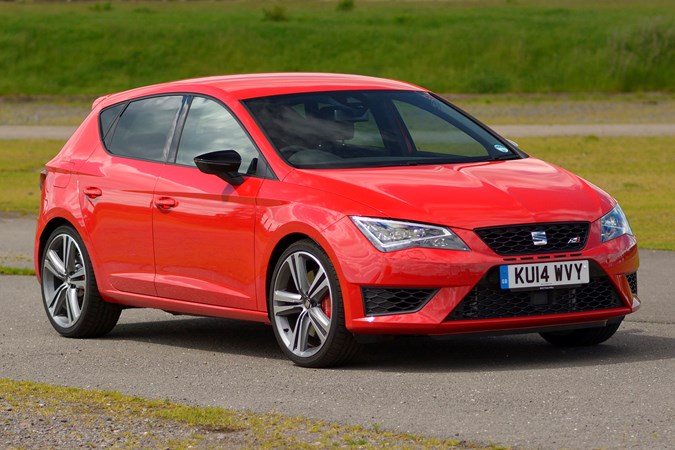
Progressive steering is quicker to react to the driver’s inputs as well, adjusting from 1.4 turns lock to lock down to 1.1 turns during quicker cornering. It’s no Porsche when it comes to real-time feedback and feel, but for a front-wheel drive hot-hatch there’s plenty of information filtering through and the weighting – even in heaviest setting Cupra mode – is well-judged.


